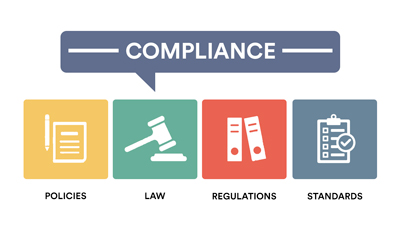ADA Compliant Website Guidelines: What Every Business Should Know
Adhering to ADA Compliant Website Guidelines
Americans with Disabilities Act (ADA) was introduced in 1990 to prevent any type of inequity against individuals with disabilities. The act obligate the businesses and NGOs to create websites that can be accessed by differently abled citizens. Under this this act, the web designers and web developers are instructed to incorporate such features while website development that complies with the ADA accessibility guidelines for websites
Why Should Your Website Be ADA Compliant?
In order to avoid potential lawsuits, we recommend businesses to check their websites to ensure they are available for people with special needs.
According to Title III of the ADA it is mandatory that all “places of public accommodation” are required by law to remove any “access barriers” that would inhibit a person with disabilities from accessing the business’ goods or services.
If you are not sure whether your website is ADA compliant, contact Infojini, a professional website design company to help you find out.

CONTACT US
If you are looking for a solid reason to make your website ADA compliant, we give you five. Read now:
-
Increases User/Customer Base –
According to the United States Census Bureau, about 50 million Americans have some type of disability. This number will continue to increase and expected to double to 98 million by 2060. It includes people, who might be interested in your product or services. But once they visit your website, they won’t be able to navigate easily to make a purchase or communicate with you. Therefore, they may go to your competitors. It is important for businesses that has demo video or images on their website to provide captions or alternate text.
-
Improves SEO endeavors –
If your portal meets the Web Content Accessibility Guidelines, it will possibly please clients/users, search engines, and screen readers alike, ultimately improving your SEO efforts. Hence, meta tagging, alternative image text, and video transcripts should be strictly taken into consideration.
-
Enhances overall website usability –
ADA accessibility guidelines for websites
Making your website easier to understand, while in sync with the Web Content Accessibility Guidelines (WCAG) will make it simple for both disabled and normal to find what they are looking for. This will build your reputation and increase your user base. A loyal user base means lots of leads and business.
-
Helps build reputation –
An ADA compliant website can not only increase your target audience base, but also enhance your brand reputation. Because those customers (disabled) might have accessed a few other websites that were not ADA compliant; disappointed every time that they are not able to get what they want, they landed on your ADA compliant website. Remember, a happy customer can build a list of several loyal customers for your business. Hence, it is beneficial to go for an ADA compliant website.
-
Saves from lawsuits –
As mentioned above above Title III of the ADA, a business will be sued if it obstruct a person with disability from accessing the business’ goods or services. Businesses including Fordham University, Foot Locker, Brooks Brothers, and even Kylie Jenner have been sued for not having an ADA compliance website. Thus, if you want to avoid the penalties, it’s best to make the necessary changes to your website immediately by following the ADA Compliant Website Guidelines.
Wondering how to make a website ADA Compliant?
LET US HELP YOU
Tags In
William B. Young
Leave a Reply Cancel reply
Subscribe For Updates
Categories
- Accountant
- AI
- Automation
- Awards and Recognitions
- Blue Collar Staffing
- Burnouts
- Campus Recruiting
- Cloud
- Co-Ops agreements
- Company Culture
- Compliance
- Contingent Workforce
- contingent workforce
- COVID-19
- Cyber Security Staffing
- direct sourcing
- Distributed Workforce
- Diversity
- Diversity & Inclusion
- Economy
- Events & Conferences
- fleet industry
- Gig Economy
- Global Talent Research and Staffing
- Government
- Healthcare
- Healthcare Staffing
- Hiring Process
- Hiring Trends
- Home Helathcare
- HR
- HR Practices
- HR Tech
- IT
- Labor Shortages
- Life Science
- Local Governments
- News
- Nursing
- Payroll Staffing
- Public Sectors
- Recruiting
- Remote Work
- Skill Gap
- SMB Hiring
- Staffing
- Staffing Augmentation
- Staffing Challenges
- Talent ROI
- Tech Staffing
- Technology
- Tips & tricks
- Total Talent Management
- UI/UX Design
- Uncategorized
- Veteran Staffing
- Veterans Hiring
- Veterans Hiring
- Workforce Management
Recent Posts
Archive
- April 2024
- March 2024
- February 2024
- January 2024
- December 2023
- November 2023
- October 2023
- September 2023
- August 2023
- July 2023
- June 2023
- May 2023
- April 2023
- March 2023
- February 2023
- December 2022
- November 2022
- October 2022
- September 2022
- August 2022
- July 2022
- June 2022
- November 2021
- October 2021
- September 2021
- August 2021
- July 2021
- June 2021
- May 2021
- April 2021
- March 2021
- February 2021
- January 2021
- December 2020
- November 2020
- October 2020
- September 2020
- August 2020
- July 2020
- June 2020
- May 2020
- April 2020
- March 2020
- February 2020
- January 2020
- December 2019
- November 2019
- October 2019
- September 2019
- August 2019
- July 2019
- June 2019
- May 2019
- January 2019
- December 2018
- November 2018
- October 2018
- September 2018
- August 2018
- July 2018
- June 2018
- May 2018
- April 2018
- March 2018
- February 2018
- January 2018
- December 2017
- November 2017
- October 2017
- September 2017
- August 2017
- July 2017
- June 2017
- May 2017
- November 2016
- October 2016
